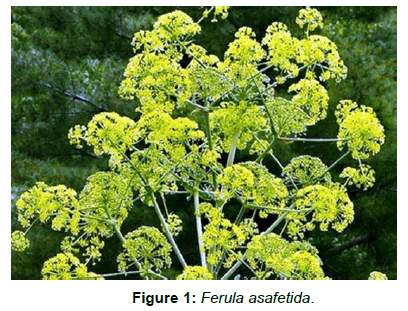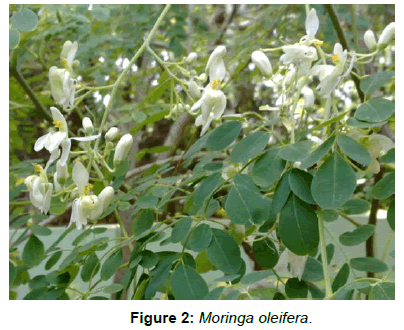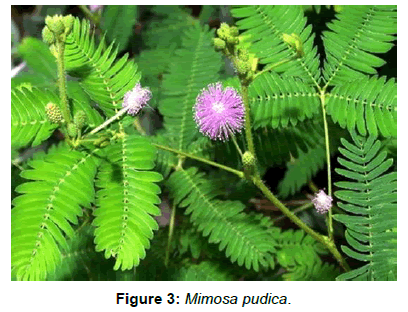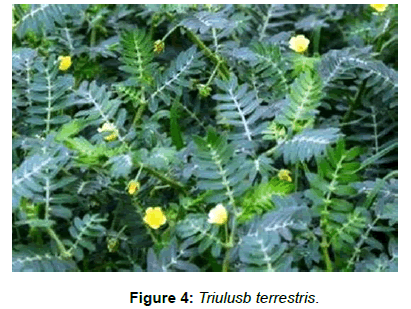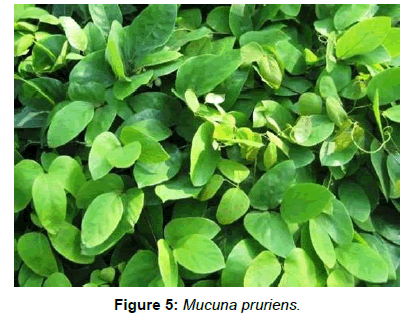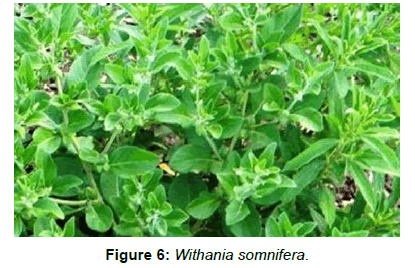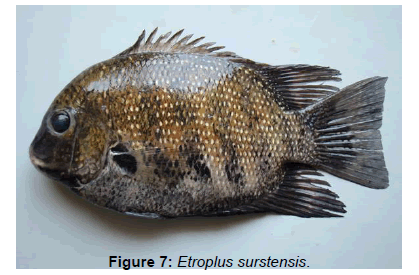Effect of Herbal Maturation Diets on Biochemical Composition ofDifferent Organs of Etroplus suratensis
Received: 22-Jun-2017 / Accepted Date: 20-Jul-2017 / Published Date: 28-Jul-2017 DOI: 10.4172/2332-2608.1000243
Abstract
The study was conducted to document the biochemical changes in the different body parts of Etroplus suratensis when feeding them with herbal maturation diets. Three different herbal maturation diets, such as Mucuna pruriens: Withania somnifera:Moringa oleifera (MP:WS:MO) in 1:1:1 ratio (Experimental Diet-1 - EXD1), MP:WS:MO in 2:1:2 ratio (Experimental Diet-2 - EXD2), MP:WS:MO in 1:2:1 ratio (Experimental Diet-3 - EXD3) and a control diet(without herbal extracts) were prepared by mixing the said proportions of the herbal extract with other feed ingredients and fed to the adult female animals. The effects of herbal maturation diet on biochemical parameters such as level of triglyceride, total protein, cholesterol and carbohydrate in blood, liver, gonad and body tissue were analyzed in the experimental fish. The results showed that the level of triglyceride, total protein, cholesterol and carbohydrate were significantly increased in EXD3 herbal maturation diets fed fishes than the other experimental and control diet fed animals. The results proved that the administration of the herbal maturation diet EXD3 enhanced the level of the triglyceride, total protein, cholesterol and carbohydrate which can in turn leads to quick maturation and reproductive success in E. suratensis.
Keywords: Etroplus suratensis; Herbal maturation diet; Mucuna pruriens; Withania somnifera; Moringa oleifera; Biochemical parameters
Introduction
Herbals which have been proved as a beneficial compound in various biological activities including maturation in fin and shell fishes are documented earlier by earlier workers [1-3]. In addition, the beneficial role of herbals to improve immune systems, quality reproduction without any side effects have been studied but at the same time, the synthetic hormones that cause several problems like inducing sex changes as well as affecting fish quality by body tissue changes has also been well documented [4]. Earlier studies in several fishes and shrimps also revealed that herbal based ingredients are highly valuable one for maturation without any side effect [4]. But, in E. suratensis, there was no report available regarding the maturation using herbals [5].
The natural plant products have been reported to have various activities like anti stress, growth promotion, appetizing, tonic, immunostimulation, aphrodisiac and antimicrobials in the finfish and shrimp larviculture due to the active principle natures such as alkaloids, flavonoids, pigments, phenolics, terpenoids, steroids and essential oils [6-8]. Plants have been found as rich source of medicines because they produce a variety of bioactive molecules most of which are probably evolved as chemical defence against predation or infection. Medicinal plants also contain active constituent like terpenes, alkaloids, steroids, saponins, tannins, phenols, quinines and flavonoids [9]. Herbals are valuable products not only in human applications but also in aquaculture industry. The use of herbal products in fish maturation and quality larval production are practiced in aquaculture industries now a day in India [10]. Herbal components mainly contain starch, carbohydrates, protein, fat, essential oils and phenolics, besides pigments and other minor components. The essential oils and phenolics are believed to play an important role in Herbal preparations. The herbal preparations are again known to have an important role in disease resistance and disease control due to its antioxidant and antimicrobial activities [11].
Earlier work revealed that the crude extract of herbals such as Withania sominifera, Mucuna pruriens, Ferula asafoetida and microalgal extracts from Isochrysis galbana, Tetraselmis sp., Spirulina salina, when they are added with fish feed, increased the fecundity and larval quality in shrimp, Penaous monodon [3]. The maturation diet prepared using the crude herbal extract increased the reproductive success in spent spawners of P. monodon [3]. As there was no report available regarding the influence of herbal maturation diet on biochemical composition of the body of the induced maturation fish, the present study was designed to study impacts of herbal maturation diets on biochemical composition of the experimental fish during herbal induced maturation (Table 1).
| S. N | Aphrodisiac herbals | Used parts |
|---|---|---|
| 1 | Ferula asafetida | Latex |
| 2 | Moringa oleifera | Resin |
| 3 | Mimosa pudica | Leaf and stem |
| 4 | Triulusb terrestris | Leaf and stem |
| 5 | Mucuna pruriens | Seed |
| 6 | Withania somnifera | Root tuber |
Table 1: Selection of herbals.
Materials and Methods
Selection of herbals
In order to study the aphrodisiac effect of herbals such as Ferula asafoetida (Figure 1), Moringa oleifera (Figure 2), Mimosa pudica (Figure 3), Triulusb terrestris (Figure 4), Mucuna pruriens (Figure 5) and Withania somnifera (Figure 6) on estragon level in the blood of Etroplus surstensis (Figure 7), the dried powder of the above said herbals were mixed with the maturation diet during preparation of maturation diet. The prepared maturation diets were individually tested on female Etroplus suratensis of body weight 300 ± 50. Ten animals were tested for each herbal maturation diet. They were reared for 50 days under optimum conditions; temperature 30 ± 2, Dissolved Oxygen 5 ± 1 mg, and water exchange 20-30% daily. The feeding was made as 10% of total body weight basis. After 50 days of feeding, blood samples were collected from caudal vein with the help of heparinized milli-litter (1 mL) syringes. The blood samples were stored in an ice box around 10°C (centigrade) the collected blood samples were subjected for examining of estrogen level following the method [12,13].
Artificial feed preparation and feeding
Equal proportion of three herbal extracts namely, Mucuna pruriens (prepared in methanol) Withania somnifera (prepared in ethanol) Moringa oleifera (n-butanol) in combination were incorporated in four experimental diets containing 0 milligram/kilogram (mg/kg) (control), MP:WS:MO (1:1:1) 600 mg/kg, MP:WS:MO (2:1:2) 600 mg/kg, MP:WS:MO (1:2:1) 600 mg/kg of extract mixture. Diets were prepared following the basal ratio of Boonyaratpalin [14]. The basal diet contained 45.1% protein, 7.2 lipids, 14.6% ash, 7.1% moisture and 3% fiber. To prepare the feeds, ingredients were mixed thoroughly and 4% gelatin solution containing active principles in appropriate concentration was added along with oil ingredients. Sufficient water was added and adjusted pH to 7 ± 0.1. After the mixture was cold extruded, cut into pellet, air dried and stored at room temperature. The E. suratensis were fed thrice a day at 8:00, 13:00 and 18:00 h at 10% of the body weight basis. Uneaten food and fecal matters were removed before feeding. Four experiment diets treatments were prepared (Table 2).
| S. No | Blood estrogen (ng/mL) | ||
|---|---|---|---|
| Aphrodisiac herbals | Level of blood estrogen | Level of blood estrogen | |
| (Before herbal administration) | (After herbal administration) | ||
| 1 | Ferula asafoetida | 8.58 + 2.39 | 29.67 + 2.42 |
| 2 | Moringa oleifera | 10.63 + 2.42 | 35.74 + 3.62 |
| 3 | Mimosa pudica | 8.79 + 2.74 | 28.55 + 2.94 |
| 4 | Triulusb terrestris | 9.54 + 2.83 | 29.32 + 3.53 |
| 5 | Mucuna pruriens | 12.32 + 3.32 | 37.37 + 2.18 |
| 6 | Withania somnifera | 11.31 + 2.13 | 46.24 + 3.23 |
Table 2: Level of hormones in blood before and after administration of herbal maturation diets in E. suratensis.
They are,
1. Control (without inclusion of herbal extracts)
2. EXD1 - Herbal maturation diet prepared from Mucuna prurience, Wittania somnifera, Moringa oleifera.(1:1:1)
3. EXD2 - Herbal maturation diet prepared from Mucuna prurience, Wittania somnifera, Moringa oleifera.(2:1:2)
4. EXD3 - Herbal maturation diet prepared from Mucuna prurience, Wittania somnifera, Moringa oleifera. (1:2:1)
Preparation of Tissue for Biochemical Analysis
Body tissue taken from pectoral region of experimental fish was weighed and kept in lyophilizer to remove water. The samples were then ground using mortar and pestle to obtain powdered form of the tissue. The liver and gonad powder was mixed with minimum quantity of sterile distilled water and then the mixture was subjected for biochemical studies.
Preparation of Blood for Biochemical Analysis
RBC count-before and after maturation
Blood samples were collected directly from lateral caudal veins of male and females which were fed with and without herbal maturation diets. The collected blood were left to clot at 37°C for 1 h and centrifuged at 3000 rpm (Revolutions per minute) for 20 min (minutes). Serum samples were used for determination of blood glucose, total protein, triglycerides and lipid levels. The blood glucose level was estimated by glucose oxidase method and the total protein was estimated by colorimetric method [15,16].
Preparation of liver for biochemical analysis
The liver tissues of the experimental fish were kept in lyophilizer to remove water. The samples were then ground in mortar and pestle to obtain liver powder. The liver tissue powder was mixed with the needed volume of sterilized distilled water and then the mixture was used for various analyses [17].
Preparation of gonad for biochemical analysis
The gonads of the experimental fish were kept in lyophilizer to remove water. The samples were then ground in mortar and pestle to obtain suitable powder form of gonad. This powder was mixed with the needed volume of sterilized distilled water and then the mixture was used for biochemical analyses.
Estimation of protein
The protein levels in liver, gonad, blood and body tissue were estimated following Lowry et al. [18]. For sample preparation, ethanol extract forms of the above said tissues were prepared and protein levels were estimated.
Estimation of carbohydrates
A known amount of sample from fish was taken and ground well with 80% ethanol and was centrifuged at 4000 rpm. From the supernatant, 0.5 mL was taken and to this 5 mL of anthrone reagent was added. The tubes were kept in a boiling water bath for 15 min, followed by dark room incubation for 15 min. The colour intensity developed was read in a spectrophotometer at 650 nm [19].
The percentage of carbohydrate was estimated using the following formula.
Percentage of carbohydrate in the sample=[OD of the sample/OD of the standard] × [Concentration of the standard/100] × [Volume of homogenate/Volume of homogenate taken for analysis] × [1000/100].
Statistical analysis
Each value is a mean ± SD of triplicate analysis within each group, values followed by different superscript letter indicate significant difference from the control (t-test, P<0.05) and subsequent post-hoc multiple comparison with SNK test.
Results
The six aphrodisiac herbals like Ferula asafetida, Moringa oleifera, Mimosa pudica, Triulusb terrestris, Mucuna pruriens and Withania somnifera were individually mixed with the common diet (10 g/1 kg) and estimated the blood estrogen level after 50 days of feeding. Among the six tested aphrodisiac herbals, Withania somnifera fed animals blood had a high blood estrogen level [(46.24 ng/mL) (nanogram/ milliliter)] and followed by Mucuna pruriens (37.37 ng/mL), Moringa oleifera (35.74 ng/mL), Ferula asafetida (29.67 ng/mL), Triulusb terrestris (29.32 ng/mL), Mimosa pudica (28.55 ng/mL). But the control had very less blood estrogens than the herbal administered animal (Table 3).
| S. No. | Ingredients | Control | EXD1 | EXD2 | EXD3 |
|---|---|---|---|---|---|
| 1 | Fishmeal (g) | 235 | 235 | 235 | 235 |
| 2 | Ground nut oil cake (g) | 125 | 125 | 125 | 125 |
| 3 | Soya bean meal (g) | 60 | 60 | 60 | 60 |
| 4 | Rice bran (g) | 30 | 30 | 30 | 30 |
| 5 | Sea weed (g) | 20 | 20 | 20 | 20 |
| 6 | Tapioca powder (g) | 15 | 15 | 15 | 15 |
| 7 | Vitamin and Minerals (g) | 5 | 5 | 5 | 5 |
| 8 | Cod liver oil (ml) | 10 | 10 | 10 | 10 |
| 9 | Plant extract (mg) | - | 600 | 600 | 600 |
| 10 | Gelatin (g) | 5 | 5 | 5 | 5 |
EXD1-Herbal maturation diet prepared from Mucuna prurience, Wittania somnifera, Moringa oleifera (1:1:1).
EXD2-Diet prepared from Mucuna prurience, Wittania somnifera, Moringa oleifera (2:1:2).
EXD3-Diet prepared from Mucuna prurience, Wittania somnifera, Moringa oleifera (1:2:1).
Table 3: Percentage composition of ingredients in the 40% protein diet with herbal maturation product.
Experimental setup
The study on biochemical constituents of different tissue samples was carried out to understand the influence of herbal maturation diets on fish maturation. The herbal maturation diet fed fish were sacrificed and analyzed for different biochemical constituents in different tissue samples such as blood, liver, gonad and body tissue. The constituents analyzed were triglyceride, total protein, cholesterol and carbohydrate. The level of these biochemical constituents after feeding with herbal maturation diet were analyzed before spawning and recorded. These analyses were carried out to know the level of these constituents in the experimental fish grown in the tanks with the above said herbal maturation diet administration. The data recorded are presented in (Tables 3-7).
| Triglyceride | ||||
|---|---|---|---|---|
| Sample | Control | EXD1 | EXD2 | EXD3 |
| Blood (µg/mL) | 37.51± 3.43a | 52.3± 4.17b | 69.23± 2.17c | 81.31± 2.15d |
| Liver (µg/mL) | 435.51± 4.65a | 462.28± 5.43b | 498.26± 7.69c | 516.23± 7.72c |
| Gonad (µg/mL) | 22.63± 1.47a | 34.63± 2.75b | 56.35± 4.53c | 61.27± 4.50d |
| Body Tissue (µg/mL) | 150.87± 5.86a | 178.42± 8.64b | 237.81± 5.79c | 261.75± 5.78d |
EXD1-Herbal maturation diet prepared from Mucuna prurience, Wittania somnifera, Moringa oleifera (1:1:1).
EXD2-Diet prepared from Mucuna prurience, Wittania somnifera, Moringa oleifera (2:1:2).
EXD3-Diet prepared from Mucuna prurience, Wittania somnifera, Moringa oleifera (1:2:1).
Each value is a mean of three replications; columns superscript with different alphabets are statistically significant (P<0.05).
Table 4: Effect of herbal maturation diet on total triglyceride in different body samples of Etroplus suratensis.
| Sample | Total protein (µg/g) | |||
|---|---|---|---|---|
| Control | EXD1 | EXD2 | EXD3 | |
| Blood (µg/mL) | 1.14 ± 0.15a | 1.46 ± 0.07b | 1.59 ± 0.16c | 1.75 ± 0.18d |
| Liver (µg/mL) | 7.21 ± 0.21a | 9.58 ± 0.28b | 9.66 ± 0.28b | 9.64 ± 0.31b |
| Gonad (µg/mL) | 2.21 ± 0.15a | 4.31 ± 0.12b | 5.05 ± 0.13c | 5.18 ± 0.14c |
| Body tissue (µg/mL) | 559.53 ± 16.21a | 631.92 ± 17.35b | 648.36 ± 16.21b | 660.43 ± 16.11b |
EXD1-Herbal maturation diet prepared from Mucuna prurience, Wittania somnifera, Moringa oleifera (1:1:1).
EXD2-Diet prepared from Mucuna prurience, Wittania somnifera, Moringa oleifera (2:1:2).
EXD3-Diet prepared from Mucuna prurience, Wittania somnifera, Moringa oleifera (1:2:1).
Each value is a mean of three replications; columns superscript with different alphabets are statistically significant (P<0.05).
Table 5: Effect of herbal maturation diet on total protein in different body samples of Etroplus suratensis.
| Sample | Cholesterol | |||
|---|---|---|---|---|
| Control | EXD1 | EXD2 | EXD3 | |
| Blood (µg/mL) | 7.61 ± 1.58a | 9.82 ± 1.19b | 13.46 ± 1.35c | 14.49 ± 1.51d |
| Liver (µg/mL) | 61.29 ± 3.51a | 152.87 ± 4.51b | 222.37 ± 7.12c | 245.12 ± 7.17d |
| Gonad (µg/mL) | 1.58 ± 0.12a | 5.63 ± 0.15b | 6.25 ± 0.61c | 6.47 ± 0.58c |
| Body tissue (µg/mL) | 5.26 ± 3.69a | 6.84 ± 4.24b | 8.51 ± 7.21c | 8.71 ± 3.91c |
EXD1-Herbal maturation diet prepared from Mucuna prurience, Wittania somnifera, Moringa oleifera (1:1:1).
EXD2-Diet prepared from Mucuna prurience, Wittania somnifera, Moringa oleifera (2:1:2).
EXD -Diet prepared from Mucuna prurience, Wittania somnifera, Moringa oleifera (1:2:1).
Each value is a mean of three replications; columns superscript with different alphabets are statistically significant (P<0.05).
Table 6: Effect of herbal maturation diet on Cholesterol in different body samples of Etroplus suratensis.
| Sample | Carbohydrate | |||
|---|---|---|---|---|
| Control | EXD1 | EXD2 | EXD3 | |
| Blood (µg/mL) | 18.28 ± 2.27a | 23.41 ± 3.81b | 28.45 ± 3.67c | 34.55 ± 4.37d |
| Liver (µg/mL) | 10.27 ± 2.66a | 12.29 ± 8.56b | 13.27 ± 8.46c | 17.15 ± 4.29d |
| Gonad (µg/mL) | 25.49 ± 1.29a | 33.44 ± 2.19b | 35.54 ± 2.16c | 60.44 ± 1.50d |
| Body Tissue (µg/mL) | 32.47 ± 2.77a | 41.57 ± 8.38b | 48.16 ± 8.30c | 57.23 ± 4.12d |
EXD1-Herbal maturation diet prepared from Mucuna prurience, Wittania somnifera, Moringa oleifera (1:1:1).
EXD2-Diet prepared from Mucuna prurience, Wittania somnifera, Moringa oleifera (2:1:2).
EXD3-Diet prepared from Mucuna prurience, Wittania somnifera, Moringa oleifera (1:2:1).
Each value is a mean of three replications; columns superscript with different alphabets are statistically significant (P<0.05).
Table 7: Effect of herbal maturation diet on Carbohydrate in different body samples of Etroplus suratensis.
Biochemical constituents
a) Triglyceride: An increased triglyceride level in blood was found in EXD3 [(81.31 μg/mL) microgram per millilitre)] administered fish, followed by EXD2 (69.23 μg/mL) and EXD1 (52.30 μg/mL). In control, the triglyceride was 37.51 μg/mL. The increase in the triglyceride level in EXD3 was fund and that was significant (P<0.05) than the control and other two maturation diets (EXD1, EXD2) in the blood sample. The level of triglyceride estimated in liver sample was maximum (516.23 μg/mL) in EXD3 treated group and followed by EXD2 (498.26 μg/ mL), EXD1 (462.28 μg/mL), and control (435.51 μg/mL). The increase in the triglyceride level in EXD3 was found significant (P<0.05) than the control and EXD1 but not significant in EXD2 in the liver sample. The levels of triglyceride in gonad and body tissue were maximum in EXD3, than the EXD1 and EXD2 administered and the control. In gonad sample, the level of triglyceride was 61.27, 56.35, 34.63 and 22.63 μg/g (microgram/gram), respectively in EXD3, EXD2, EXD1, and the control. The increase in the triglyceride level in EXD3 was found significant (P<0.05) than the control and other two maturation diets (EXD1, EXD2) in gonad sample. Similarly in body tissue the levels of triglyceride was increased significantly (P<0.05) in EXD3 (261.75) followed by EXD2 (237.81), EXD1 (178.42), and control (150.87 μg/g) (Table 3).
b) Total protein: The highest level of total protein (1.75 μg/mL) was found in the blood of animals which were administered with EXD3, followed by EXD2 (1.59 μg/mL), EXD1 (1.46 μg/mL) and the control (1.14 μg/mL). The increase in total protein level in EXD3 was found significant (P<0.05) than the control and other two maturation diets (EXD1, EXD2) in blood sample. The total proteins in the liver of animals which were fed with EXD3, EXD2, EXD1 and the control were 9.64, 9.66, 9.58 and 7.21 μg/g, in respectively. The levels of total protein estimated in gonads were 5.18, 5.05, 4.31, and 2.21 μg/g, in EXD3, EXD2, EXD1 and control, fed animals, respectively. The increase in total protein level in EXD3 was found significant (P<0.05) than the control and EXD1 but not significant in EXD2 in the liver sample. Similarly, the total protein in body tissue also maximum 660.43 in EXD3 followed by EXD2 648.36, EXD1 631.92 and the control 559.53 μg/g (Table 5).
c) Cholesterol: The blood samples obtained among the four experimental diets (EXD1, EXD2, EXD3 and control) the significant increase (P<0.05) in cholesterol level were observed in EXD3 (14.49) and followed by EXD2 (13.46), EXD1 (9.82) and control (7.61) μg/mL. In liver sample, the level of cholesterol in EXD3 was 245.12 and followed by EXD2 (222.37), EXD1 (152.87) and control (61.29 μg/g). An increase in total protein level was found in EXD3 which was significantly (P<0.05) increased than the control and other two maturation diets (EXD1, EXD2) in liver sample. In gonad sample, the maximum level of cholesterol was observed in EXD3 (6.47) and followed by EXD2 (6.25), EXD1 (5.63) and control (1.58 μg/g). An increase in cholesterol level in EXD3 was found significant (P<0.05) than the control and EXD1 but not significant in EXD2 in the gonad sample. Similarly in body tissue, cholesterol level was found highest level in EXD3 (8.71), EXD2 (8.51), EXD1 (6.84) and control (5.26 μg/g). A significant increase (P<0.05) in cholesterol level was found in EXD3 than the control and EXD1 but non-significant in EXD2 in the body tissue sample (Table 6).
d) Carbohydrate: The highest level of carbohydrate was estimated in the blood of EXD3 (34.55 μg/mL) fed animals and followed by EXD2 (28.45 μg/mL), EXD1 (23.41 μg/mL) and the control (18.28 μg/mL). A significant increase (P<0.05) in carbohydrate in blood was found in EXD3 fed animals which was higher than the control and other two maturation diets (EXD1, EXD2) In liver, the level of carbohydrate increased significantly (P<0.05) in EXD3 (17.15) and followed by EXD2 (13.27), EXD1 (12.29) and control (10.27 μg/g). In the gonads samples, the level of carbohydrate estimated were 60.44, 35.54, 33.44 and 25.49 μg/g, in the animals fed with EXD3, EXD2, EXD1 and control respectively. In gonad sample, the increase in carbohydrate in EXD3 was found significant (P<0.05) than the control and other two maturation diets (EXD1, EXD2). In body tissue, the maximum level of carbohydrate was found in EXD3 treatment, followed by EXD2, EXD1 and the control in a decreasing order such as 57.23, 48.16, 41.57 and 32.47 μg/g. Carbohydrate level in EXD3 was found significant (P<0.05) than the control and other two maturation diets (EXD1, EXD2) in body tissue sample. The results are presented in Table 7.
Discussion
An increase in the level of the biochemical constituents such as triglyceride, total protein, cholesterol and carbohydrate were recorded from different samples such as blood, liver, gonad and body tissue of the experimental fish E. suratensis due to the administration of EXD3 herbal maturation diet followed by EXD2 and EXD1 administration. This showed a clear influence of these herbal maturation diets on enhancing the level of these biochemical constituents.
The triglyceride level of blood, liver, gonad and body tissue showed the highest increase in EXD3 combined diet than EXD2, EXD1 and the control and it showed that the herbal administration might have induced digestion and that enhanced the physiological activities of the body, blood, liver and gonad cells that induce to secrete more triglyceride that may cause more sperm production in the male and more egg production in the female fish. As these physiological changes enhanced the secretion of triglycerides, the level of it was increased in the herbal maturation diet administered fish during maturation process and these levels were low in the control that may be due to zero administration of herbal maturation diet.
Earlier study of Orhan et al. [20] also stated that the level of triglyceride was associated with maturation and increase serum triglyceride and cholesterol. It also helped to increase gonadal enlargement. An earlier study of Stryer [21] stated that cholesterol is also the precursor of steroid hormones. It was reported that the triglyceride and cholesterol were found low in the beginning of reproductive activity and increases during the advanced stage of reproductive in Capoeta capoeta umbla.
It is expected that the deposited energy source such as triglyceride and cholesterol were increased by the herbal maturation diets such as EXD3, EXD2 and EXD1 administered E. suratensis and that might have been used for maturation. These might be a possible chance for enhanced maturation in the herbal maturation diet applied fish than the control.
Earlier works of several authors also proved that the level of triglyceride and cholesterol at the time of maturation and decreased during spawning [5,22,23]. These studies stated that serum triglyceride levels increased from May to July this period is the maturation period of this fish [20]. Similarly, it has been also reported s reported that serum triglyceride level increased during the maturation period [24].
The level of total protein was found maximum in the samples of herbal maturation diet EXD3 administered fish and the level was minimum in the control fish. During maturation, the hormone administration enhanced the level of protein by inducing the synthesis mechanism of protein and that enhanced the level of sperm production and egg production in the fish and that may cause the increase in the level of protein in the experimental fish during maturation. Earlier studies [25,26] stated that in goldfish, plasma gonadotrophin level increased during maturation in both males and females. From the obtained results, it can be concluded that the herbal maturation diet administration enhanced the protein level in the body.
The increased level of total protein in E. suratensis due to herbal maturation diet administration was also supported the earlier work of Citarasu [27]. He stated that the increase of protein level in the animal tissue due to herbal maturation diet enriched Artemia feeding enhanced the maturation process and reproductive success in Penaeus spp. As the earlier finding of Citarasu in 2000, the present work in E. suratensis also showed the same observation of increased protein in the blood, liver, gonad and body tissues and that might be the effect of enhanced anabolic activity by the maturation diet that causes an enhanced level of protein in the observed samples of E. suratensis.
Research of earlier studies stated that lipid and cholesterol content has been identified as a very important deciding factor of the overall nutritional value and the major source of the diet’s metabolizable energy directly linked to the growth of the consumer organisms [28,29]. Citarasu [27] compared his findings in shrimp and prawns with earlier finding of Xu XL et al. [30] and concluded that of the herbal maturation diet has direct influence on enhanced cholesterol and lipid level. In this present study also, the administered herbal maturation diet might be a reason in increasing the cholesterol level in the experimental fish E. suratensis.
The increase in level of carbohydrate in the samples of blood, liver, gonad and body tissue in the fish with administration of herbal maturation diet such as EXD3, EXD2 and EXD1 diets caused an influence on digestion and absorption and that leads to raise in the level of carbohydrate in the gonads and body tissues that supply the energy for the gonadal development. Earlier studies supported that the level of glucose and carbohydrate showed an increased level during maturation and it declined rapidly after the process of ovulation [2,31]. It also stated that during maturation process the increased level of carbohydrate supplies energy for production of egg and sperm cells and whereas, the level was declined after ovulation and in the control, where no herbal diet administration yielded the lowest level of carbohydrate.
The effect of herbal maturation diet in inducing maturation has been proved by this study. As the herbal maturation diet is the natural one and do not produce any residual effect and bio magnification as in the case of presently used chemical based hormones which are being use to induce the fish for maturation, these herbal maturation diets could be used as an ingredient in maturation diet [32,33].
Acknowledgments
I would like to express my sincere gratitude to my beloved Guide, Late Professor Dr. Peter Marian, for giving opportunity to do research and enlighten my research interest. One of the authors M. Micheal Babu acknowledges IFS (International Foundation for Science) for the grand support through the fund (F/3291-2) to carry out this work.
References
- Babu MM (1999) Developing bioencapsulated ayurvedic product for maturation and quality larval production in Penaeus monodon. Ph.D thesis, to M.S.University, Tirunelveli, India.
- Babu MM, Marian MP (2001) Development of bioencapsulated herbal products for maturation and quality larval production in Penaeus monodon (L.).
- Babu MM, Sivaram V, Immanuel G, Citarasu T, Punitha SMJ (2008) Effects of herbal enriched Artemia supplementation over the reproductive performance and larval quality in spent spawners of the tiger shrimp (Penaeus monodon). Turk J Fish Aquac Sci 8: 301-307.
- Kumar RB, Hiroki K, Shigeo, Mikihiko H, Masaru N (2003) Gonadal Restructuring and Correlative Steroid Hormone Profiles during Natural Sex Change in Protogynous Honeycomb Grouper (Epinephelus merra). Zoological Society of Japan 20: 1399-1404.
- Cerda J, Zanuy S, Carrillo M, Ramos J, Serrano R (1995) Short and long term dietary effects on female sea bass (Dicentrarchus labrax): seasonal change in plasma profiles of lipids and sex steroids in relation to reproduction. Comp Biochem Physiol 111: 83-91.
- Citarasu T, Babu MM, Marian MP (1998) Application of biomedicinal products for improving marine shrimp larval production. Aqua - Terr. Annual symposium. School of Biological sciences, MK University, Madurai, India.
- Citarasu T, Sekar RR, Babu MM, Marian MP (2002) Developing Artemia enriched herbal diet for producing quality larvae in Penaeus monodon, Asian Fisheries Science 15: 21-32.
- Sivaram V, Babu MM, Citarasu T, Immanuel G, Murugadass S (2004) Growth and Immune response of juvenile greasy groupers (Epinephelus tauvina) fed with herbal antibacterial active principle supplemented diets against Vibrio harveyi infections. Aquaculture 237: 9-20.
- Harbone SV (1982) Biochemistry of plant phenolics. Recent Advances in Phytochemistry12: 760.
- Zafar R (1994) Medicinal plants of India CBS Publications and Distributors, New Delhi: 105.
- Prasad S, Variyur, Padhyoy KB (1993) Chemical investigation of some commonly used spices. Aryavaidyan 6: 262-267.
- Kraak VDG, Dye HM, Donaldson EM (1984) Effects of LH-RH and Des-Gly10wD-Ala6xLH-RH- Ethylamide on plasma sex steroid profiles in adult female coho salmon Oncorhynchus kisutch. Gen. Comp. Endocrinol 55: 36-45.
- Dye HM, Sumpter JP, Fagerlund UHM, Donaldson EM (1986) Changes in reproductive parameters during the spawning migration of pink salmon Oncorhynchus gorbuscha Walbaum. J Fish Biol 29: 167-176.
- Boonyaratpalin M (1993) Nutritional requirements of grouper Epinephelus. The Proceedings of Grouper Culture. National Institute of Coastal Aquaculture. Department of fisheries, Thailand: 50-55.
- Malik CP, Singh MB (1980) Plant enzymology and histoenzymology. New Delhi: Kalyani: 278.
- Kemp A, Adrienne JM, Hejningen KH (1954) A colorimetric method for the determination of glycogen in tissues. The Biochemical Journal 56: 646-648.
- AOAC (1995) Official methods of analysis of the Association of Official Analytical Chemist. 16th edition, Association of Official Analytical Chemist, Washington, DC, USA: 1234-1565.
- Lowry OH, Rosenbrough NJ, Farr RL, Randall RJ (1951) Protein measurement with the Folin Phenol reagent. J Biol Chem 193: 265-275.
- Roe JH (1955) The determination of sugar in bloodand spinal fluid with anthrone reagent. J Biol Chem 212: 335-343.
- Orhan E, Übrahim H, Abdulkadir ÜLTAÞ (2002) Annual Cycle of Serum Gonadal Steroids and Serum Lipids in Capoeta capoeta umbla, G.ldenstaedt, 1772 (Pisces: Cyprinidae). Turk J Vet Anim Sci 26: 1093-1096.
- Stryer L (1981) Biochemistry (2nd edn.), Freeman WH and Company. San Francisco. USA: 949.
- Dindo JJ, MacGregor R (1981) Annual Cycle of Serum Gonadal Steroids and Serum Lipids in Striped Mullet. Trans Am Fish Soc 110: 403-409.
- Smith LS (1982) Introduction to Fish Physiology. TFH Publications, The British Crown Colony of Hong Kong: 352.
- Nikolsky GV (1969) Fish Population Dynamics. Oliver and Boyd Ltd. Tweeddale Court, High Street, Edinburgh: 323.
- Shan-Ru J, Guan-Ru C, Jong-Yih L, Yung-Sen H, Sylvie D, et al. (2002) Regulation of pituitary gonadotropin II and growth hormone content by sex steroids and pituitary extract in the aquacultured Japanese eel, Anguilla japonica. Aquaculture 209: 319-332.
- Kobayashi M, Furukawa K, Kim M, Aida K (1997) Induction of male-type gonadotropin secretion by implantation of 11-ketotestosterone in female goldfish. Gen Comparative Endocrinology 108: 434-45.
- Citarasu T (2000) Developing Artemia enrichment ayurvedic diet for promoting growth and reducing stress induced diseases in penaeus Spp, Ph.D. thesis submitted to M. S. University, Tamil Nadu, India.
- Pandian TJ (1975) Mechanisms of hetertrophy. In Marine Ecology 2: Part I, Kinne IO (Ed.), Wiley and Sons, Newyork: 61-250.
- Bhargava SC, Jakher GR, Saxena MM, Sinha RK (1987) Laboratory culture and nutritional assessment of Artemia from Didwana salt Lake (India) 193-198.
- Xu XL, Ji WJ, Castel RK, O’dor (1994) Influence of dietary lipid on fecundity, egg hatchability and fatty acid composition of Chinese prawn (Penaeus chinensis) brood stock. Aquaculture 119: 359-370.
- Kubokawa K, Watanabe T, Yoshioka M, Iwata M (1999) Effects of acute stress on plasma cortisol, sex steroid hormone and glucose levels in male and female sockeye salmon during the breeding season. Aquaculture172: 335-349.
- Sorgeloos P, Bengtson DA, Decleir W, Jaspars E (1987) In Artemia Research and its Applications. Morphology, Genetics, Strain characterization, Toxicology. Universa press, Wetteren, Belgium: 127.
- Larvi (2001) Fish and Shellfish larviculture symposium. Hendry CI, Stappen V, Wille GM, Sorgeloos P editors. European Aquaculture Society, Special Publication, Oostende, Belgium: 40-43.
Citation: Dhas SA, Selvaraj T, Citarasu T, Punitha SMJ, Gopal P, et al. (2017) Effect of Herbal Maturation Diets on Biochemical Composition of Different Organs of Etroplus suratensis. J Fisheries Livest Prod 5: 243 DOI: 10.4172/2332-2608.1000243
Copyright: © 2017 Dhas SA, et al. This is an open-access article distributed under the terms of the Creative Commons Attribution License, which permits unrestricted use, distribution, and reproduction in any medium, provided the original author and source are credited.
Share This Article
Recommended Journals
Open Access Journals
Article Tools
Article Usage
- Total views: 4089
- [From(publication date): 0-2017 - Mar 06, 2025]
- Breakdown by view type
- HTML page views: 3358
- PDF downloads: 731

